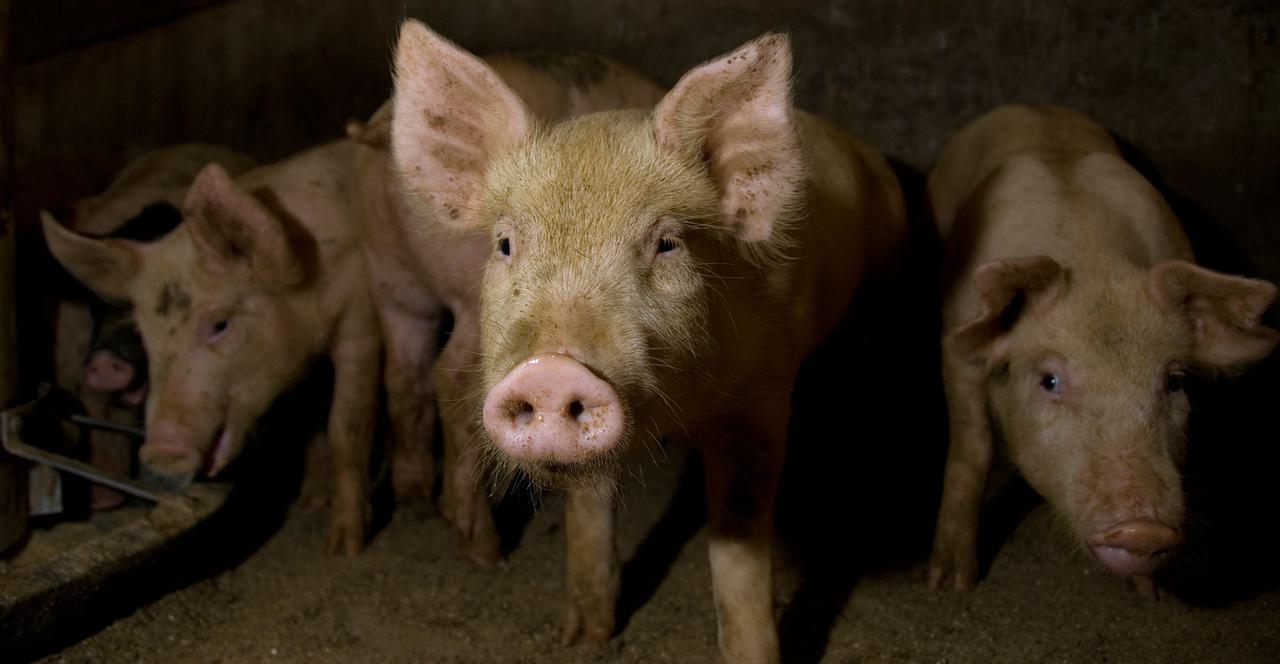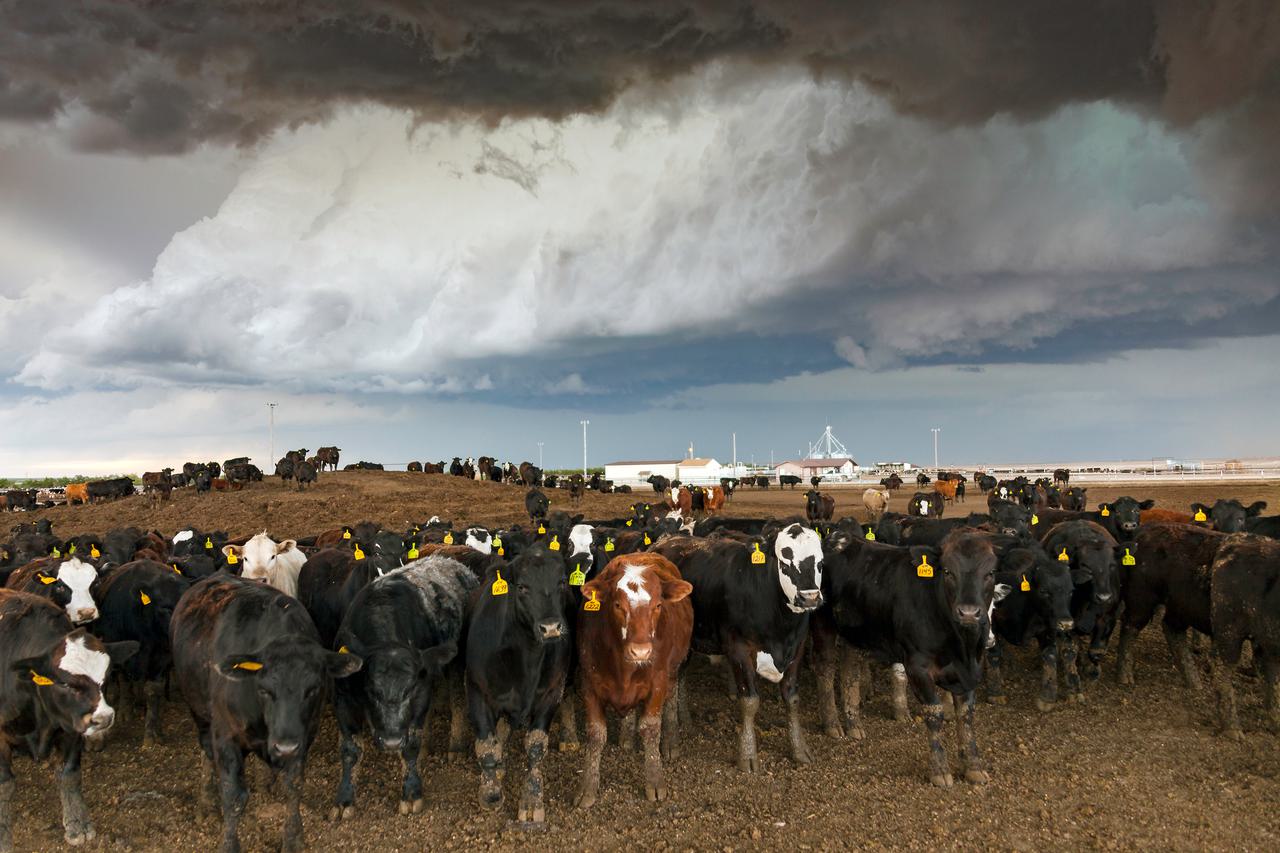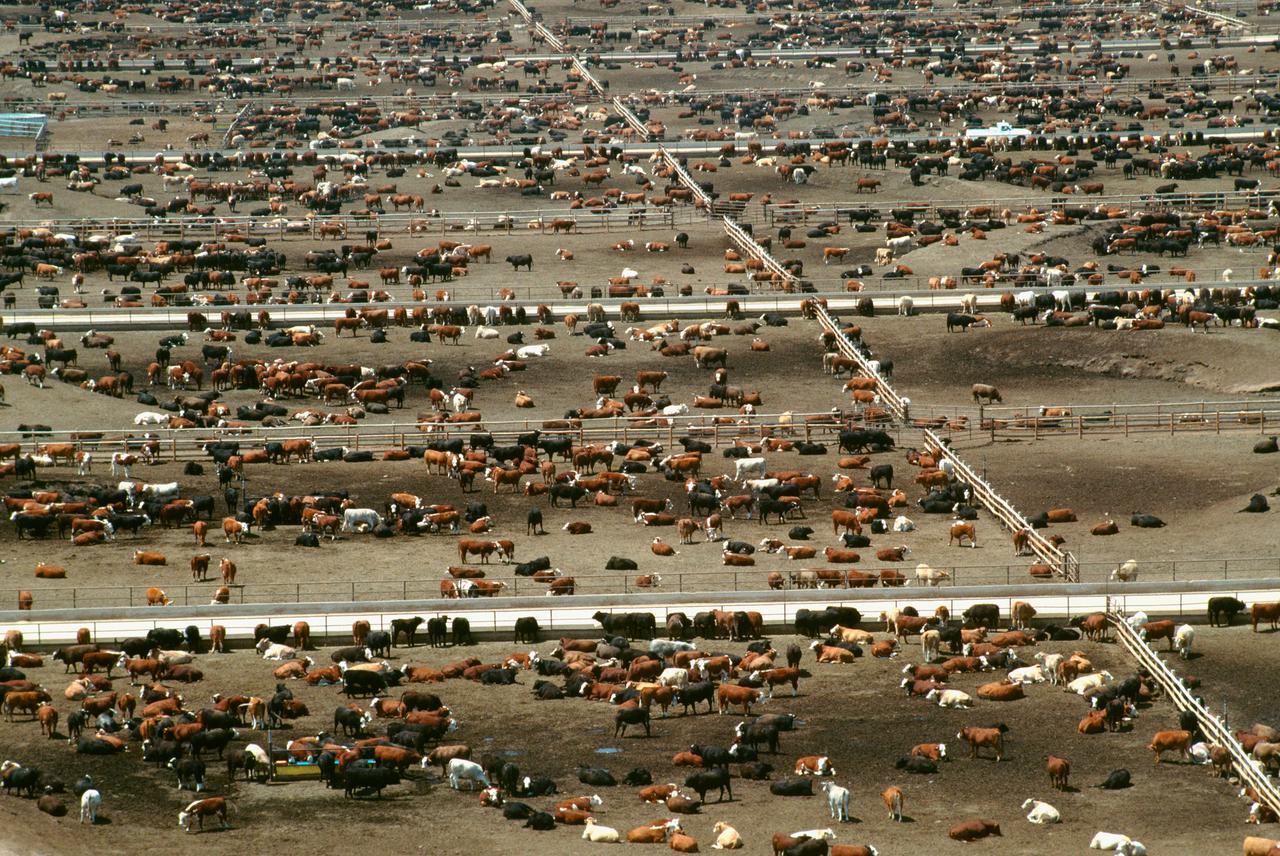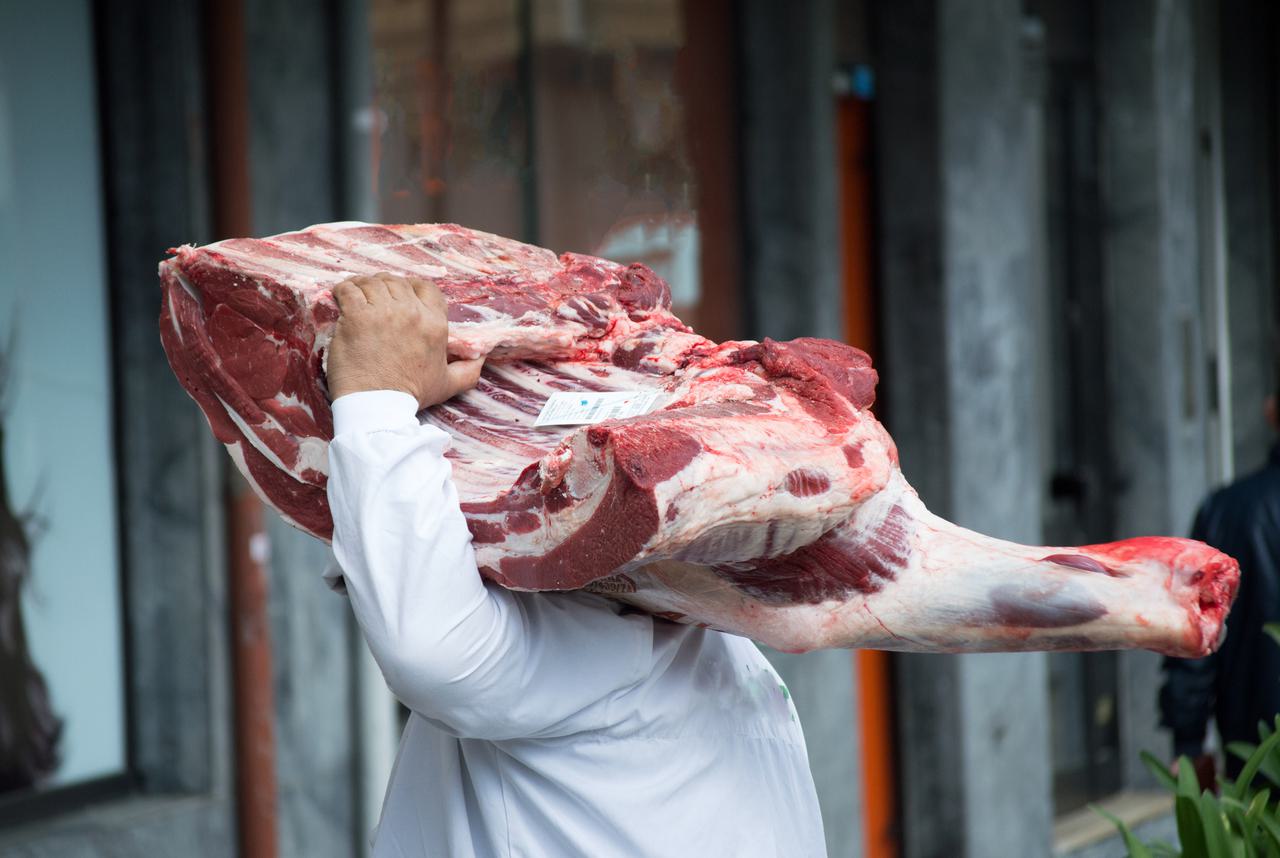
Critical antibiotics still used on US farm animals despite superbug crisis
Antibiotics crucial to human medicine are still being used in “unacceptable” quantities on US livestock farms, despite rules brought in last year intended to curb their use and combat the spread of deadly superbugs.
Tests on thousands of meat samples carried out by the US Food Safety Inspection Service (FSIS) show that farm animals are still being dosed with powerful antibiotics classified as “critically important” to human health. The widespread use of such drugs on livestock is one of the key drivers of antibiotic resistance, a growing public health crisis.
Regulations were brought in by the Food and Drug Administration (FDA) in January 2017 which banned the use of antibiotics on livestock without a prescription from a vet and made it illegal to use the drugs solely to make animals fatter, which for years had been a common practice on industrial farms.
The new rules aimed to curtail the overuse of antibiotics and make sure they were only used when medically necessary. However the tests on livestock slaughtered at dozens of US meat packing plants – including some operated by major processors such as Tyson, Cargill and JBS - found “critical” antibiotics still in use in many meat supply chains. There had been no reduction in the number of antibiotics found in samples from the year before the regulations came into effect.
Analysis by the Bureau also shows how a loophole means US farmers can still use many antibiotics targeted by the ban in much the same way today as they could beforehand, including drugs previously used for growth promotion.
The findings indicate that more needs to be done to combat antibiotic overuse on farms, according to critics.
Responding to the findings, meat industry representatives said it was impossible to make meaningful conclusions about antibiotic use on the farms from the data in question. The samples only indicated the presence of antibiotics, they pointed out, with no information about why they were administered. Sometimes it was necessary to use critical antibiotics, they said, and all drugs used were approved for use in animals by the FDA.
Tyson told the Bureau: "We’ve held meetings with livestock farmers and ranchers on antibiotic stewardship and funded research on removing antibiotics important to humans from cattle production. We also continue to explore new ways to engage farmers, ranchers and others in the discussion about alternatives to antibiotics that are also important to humans." The other companies did not respond.

"Critically important" medicines
FSIS records spanning a four year period between 2013 and 2017 detail the results of the official chemical residue testing programme at US meat plants, in which 180,000 samples per year were analysed for any substances which could potentially be harmful to human health.
The data, obtained by the Bureau of Investigative Journalism and the Guardian, shows 13 separate antibiotics classed by the World Health Organisation (WHO) as being “critically important” to human medicine are still being used in meat supply chains.
Of these, nine are classified as being “highest priority critically important”. WHO recently warned that this class of antibiotics are so essential to human medicine that they should no longer be used in livestock farming. These antibiotics are often “the last line, or one of limited treatments, available to treat serious bacterial infections in humans," the organisation said.
Using and overusing antibiotics enables bacteria to develop resistance to them, meaning the drugs will no longer work to treat infections. Antibiotic resistance is one of the gravest public health threats facing the world, estimated to kill 23,000 Americans each year, and 700,000 people around the world. (For comparison, about 40,000 people were killed in car accidents in the U.S. in 2017).
The FSIS data also showed that there had been no reduction in the number of antibiotics turning up during testing. In 2016, the year before the restrictions came into force, the number of residues of “highest priority critically important” antibiotics was 363. The number actually increased in 2017 (after the new restrictions) to 461.
More than 150 individual meat processors were found to have at least one “critically important” antibiotic in use within their supply chains. A total of 47 had five or more “critically important” antibiotics in their supply chains, and 18 had nine or more “critically important” antibiotics in their supply chains.
Medical experts and pressure groups said the findings showed how much more needed to be done, including meat companies pressuring farms they source from to reduce antibiotic use. The FSIS figures are not a comprehensive picture of antibiotic use on US farms but are a snapshot showing which drugs are used in specific supply chains.
“It is absolutely crucial that these practices end,” said Dr Thomas Van Boeckel, a scientist at Swiss university ETH Zurich who has mapped the use of antibiotics in animals globally. It was “not acceptable” that some company supply chains were found to be using multiple critically important antibiotics, he stressed.
“When meat producers misuse antibiotics important to human medicine, especially those that are considered critically important, resistant bacteria can rapidly multiply, spread off the farm, and potentially infect people with dangerous illness,” said Matt Wellington, antibiotics campaign director of the Public Interest Research Group (PIRG). “If we lose these life-saving antibiotics, we lose the foundations of our modern medical system.”
The data was obtained by Sarah Sorscher of the Center for Science in the Public Interest who says: "The current regulations prohibit antibiotics for use for growth promotion, but don't do a lot to address other types of inappropriate antibiotics use. It's hard to track how or why antibiotics are being used, and that leaves consumers with a lot of questions."

Growth promotion or disease prevention?
Antibiotics have historically been used in industrial farming in a widespread way for various purposes, routinely included in animal feed or water. Crowded and sometimes insanitary conditions provide the conditions for diseases to flourish; as well as treating infections if and when they occur, antibiotics administered continuously can prevent these infections from taking hold. Giving animals small regular doses of antibiotics can also make them grow fatter quicker - a practice termed “growth promotion” - by creating certain conditions within the body that optimise weight gain.
The use of antibiotics to help fatten animals was banned as part of the new regulations. Many were removed from the market in response. But others simply removed the words “growth promotion” from their labels. There are a total of 31 antibiotics formerly marketed as growth promoters still on sale for use on farms today.
There is no clear line between growth promotion and disease prevention - in fact it is precisely because they prevent certain diseases that some antibiotics are able to stimulate growth. That means those particular antibiotics need restrictions on how long they can be administered for, say experts - something which the 2017 regulations did not cover.
While most antibiotics do have restrictions on how long they should be used for - from a few days to a few weeks - drugs used to treat certain diseases have no restrictions. Our investigation established that the majority of the 31 antibiotics formerly used as growth promoters can be used to treat those particular diseases. Critics say the current FDA regulations still allow farmers to administer antibiotics continuously to farm animals.
“Unfortunately, many of the same antibiotic medications that were long used for the purposes of growth promotion are still available on the market today under labels of disease prevention,” said Dr Matthew Ferreira, a veterinarian and public health expert from the University of Chicago. “This loophole means that the same drugs that were used as growth promoters can still be routinely administered to large numbers of healthy animals at low doses.”
Senator Elizabeth Warren has petitioned the FDA to close this loophole and introduced the Strengthening Antibiotic Oversight Act earlier this year. Commenting on the Bureau’s findings, Senator Warren said: “Serious gaps remain in the FDA’s oversight of antibiotics in animals, including the lack of limits on durations of use for many medically important antibiotics. I’ve called for the FDA to increase their oversight of medically important antibiotics in food producing animals, and was glad to see them recently commit to establishing appropriate durations of use.”
Meat producers warn stricter rules could endanger animal welfare. The National Cattlemen's Beef Association told the FDA: “The arbitrary assignment of antimicrobial use durations without reasonable alternatives... presents a threat to animal health that is not acceptable.”
Tiffany Lee, a North American Meat Institute (NAMI) vet, said they would not prescribe drugs without good cause. “Veterinarians know the difference between growth promotion and antibiotics for disease prevention, and they understand that they are prescribing these antibiotics for disease prevention,” she said.

The chain of resistance
The fact that very small doses of antibiotics stimulate growth in animals was discovered by chance by researchers in the 1940s. It soon began to be exploited. As farming became increasingly industrialised, routine use of antibiotics not just to promote growth but also to prevent disease became standard practice around the world.
Over the decades the amount of antibiotics used on animals came to vastly outstrip the amount used on humans. But the widespread use and misuse of antibiotics - on both animals and humans - came at a cost. Bacteria evolved to develop resistance to the drugs that are attacking them - the more antibiotics are used, the more resistance will rise.
Without effective antibiotics, infections like sepsis or food poisoning can kill, and routine medical procedures which rely on antibiotics to prevent infection – like Caesarean sections, chemotherapy and joint replacements - become very risky.
The growing antibiotic resistance crisis led to countries around the world taking action. Many governments are now trying to reduce antibiotic use as much and as quickly as possible.
The 2017 FDA regulations bring the US in line with rules the European Union has had in place for years; the use of antibiotics as growth promoters was banned inside the EU in 2006 but it took years to effectively reduce the use of these drugs.
When effective action has been taken to closely control our most important antibiotics, there has been an immediate public health benefit. For instance, the UK poultry industry body banned the use of cephalasporins, an antibiotic used to treat serious infections in humans, on its farms in 2012. Since then, the proportion of E coli bacteria resistant to this antibiotic found in British chicken has reduced from 65% to 10%, according to recent figures published by the Food Standards Agency.
A study published by the campaign group Alliance to Save our Antibiotics earlier this year estimated that US farm animals are dosed with five times as many antibiotics as farm animals in the UK. The US meat industry points out that all drugs are FDA-approved and insists they are being used appropriately. “Antibiotic residues are extremely rare and meat is safe. To make any other sweeping public health conclusions from the residue testing data is inappropriate and irresponsible,” said a NAMI spokesperson.
The FDA is planning to release data on pharmaceutical sales for animal antibiotics for 2017 this December, which will give more indication as to how well the new regulations are working.


